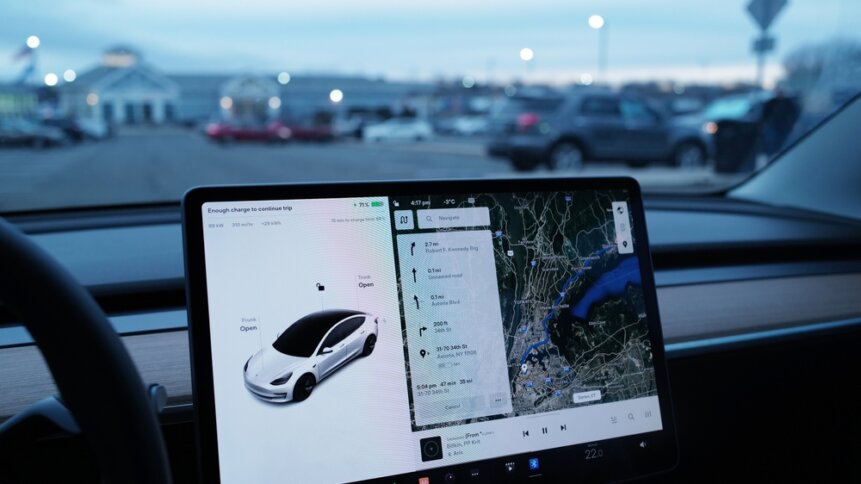Tesla unveils Fleet API, but how will it affect the motor industry?

• Tesla launches Fleet API. What does it do?
• Will third-party developers take to Tesla Fleet API – and what might they do with it?
• Does Fleet API represent a major turning point in automotive development?
Automaker Tesla has released its first official public API (Application Programming Interface) program after years of running unofficial API documentation. Known as Fleet API, this long-awaited API will introduce new possibilities for Tesla owners, marking a transformative, innovative time in the automotive industry where software and motor vehicles unite.
Tesla owners are now able to access and manage various features in their vehicles via API, enabling them to personalize and customize their driving experience. According to Tesla, “Fleet API is a RESTful data and command service providing access to Tesla vehicles and energy devices. Partners can interact with their own devices, or devices to which they have been granted access by a customer.”
These technological innovations will undoubtedly have far-reaching implications for the automotive industry and third-party app developers. Yes, developers have previously utilized the unofficial API for mobile apps, but this official release provides improved documentation and accessibility. This could be the beginning of a revolutionary period, changing how drivers interact with their vehicles forever.
READ NEXT

BYD outstrips Tesla as Earth warms
The future of automotive technology may be here
We could be at a significant moment in the electric vehicle and motor industry as a whole. Now Tesla has opened its API to developers, it paints a picture of a future where cars are more than mere vehicles; where they become personalized, customizable “experiences.” We have been on a road to more personalized driving experiences for years, but this release connects drivers with their vehicles more than ever before, allowing them to tailor driving experiences to meet their own preferences.
From tracking charging patterns and integrating various smart devices to improved safety features and superior navigation frameworks, the future of driving could be very different to what we know now.
There are further implications to consider. The automotive industry as a whole could be revolutionized, as developers continue to explore the vast possibilities APIs offer. The next few years and beyond promise to be an exciting time when innovative applications are born and implemented for everyday driving experiences. Automotive technology is destined to be driven by APIs, creating new advancements that will benefit not only car owners, but the automobile industry in its entirety.
Tesla Fleet API explained
A RESTful data (data that adheres to the principles of Representational State Transfer (REST)) and command service, Fleet API allows access to Tesla vehicles and other energy devices. Through this API, collaborators can engage with their personal devices or those provided by a customer, resulting in improved integration and customization.
Tesla has operated an unofficial API for years, but in late 2023, the automotive developer made its API available to developers. That gave them the tools to forge third-party apps, expanding Tesla’s app landscape. While other car manufacturers, including BMW and Ford released APIs before Tesla, this is considered an important moment in the automotive industry, as Tesla expands its technological footprint further.

Some personalizations are more personal than others.
As the name suggests, Fleet API is mainly focused on fleet management, optimizing efficiency, safety, and overall operational effectiveness. But Tesla has teased that it may release a software developer kit (SDK) for third-party apps, something that would enhance the features and capabilities of its cars.
Fleet API is fully documented, allowing developers the chance to produce fresh, customized experiences for Tesla drivers.
As far back as 2016, Tesla CEO Elon Musk discussed a plan to transition from phone app mirroring to the center console, rather than releasing a complete API. So this recent API release suggests a strategic shift and a dedication towards developers.
To ensure Fleet API works efficiently, users must use the correct geographical region for their needs, as it is only available regionally. When accessing the API, an authentication token is required by the endpoints. Altogether, two token types can be created – third-party tokens (used on behalf of customers), and partner authentication tokens – both of these tokens act as security for authorized access to the Fleet API.
The partner authentication token allows a customer to give access to their Tesla (both vehicles and devices). Developers can trigger the authorization code flow and guide the customer through an authorized request to create an authentication token for partners.
One crucial feature Fleet API offers is the possibility to retrieve a Tesla business account’s session data and charging history. This can help owners analyze their charging patterns, making for more convenient motoring. Developers can also access information associated with a user account summary, the car’s region, and any active orders. That means they can tailor applications to individual user preferences.
There are also various active membership tiers with Fleet API, each offering unique features and functionality. These tiers give developers greater flexibility, making it easier to select the most appropriate access level for specific requirements.
The release of Fleet API marks an exciting time for drivers, developers, and the automotive industry. Developers can introduce their own third-party apps that integrate seamlessly with Tesla vehicles, while Tesla owners can enjoy new features and apps that promise to enhance their overall driving experience and give valuable insights into how their vehicle is performing.
We’ve shifted gear into a new era, one driven by API and the notion of experience personalization while behind the wheel.









